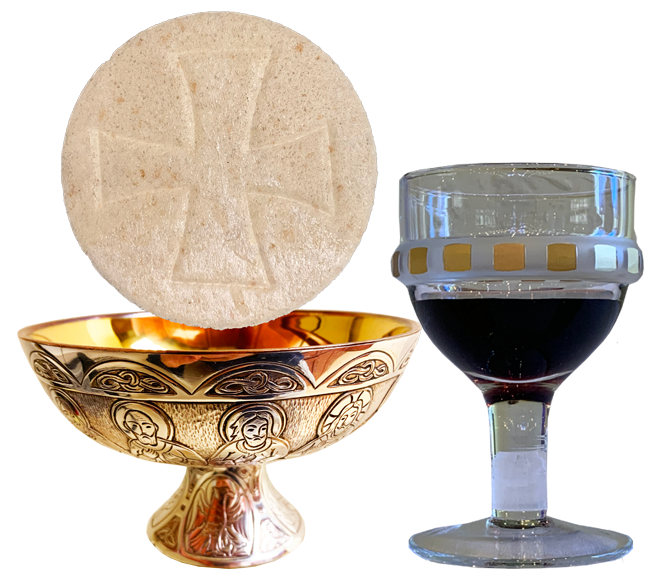
The Eucharist
The Eucharist is the "source and summit of the Christian life" (Lumen Gentium, article 11).
1st Eucharist
At St. Anthony, if a person is 18 and over and needs to receive 1st Eucharist, they are invited to join our RCIA Program. In this year-long program, the person will be invited in stages to receive the rest of the relevant sacraments of Eucharist, Reconciliation and Confirmation. Click here for more information on the RCIA.
Children in our Archdiocese normally prepare to receive the Sacraments of 1st Reconciliation and 1st Eucharist in the 2nd Grade. Often this class will have a mixture of ages.
The children prepare for the Sacrament of 1st Reconciliation in the fall and receive that sacrament sometime in November. They prepare to receive 1st Eucharist in the Spring and receive that Sacrament on or around the Feast of the Body and Blood of Christ.
Click here for more information on the Sacramental Preparation Class and to Register for the Class.
Explanation of the Sacrament of the Eucharist
Below is a simple outline that can navigate you to one of the five sections.
In the outline, CCC is short for the Catechism of the Catholic Church
Intro
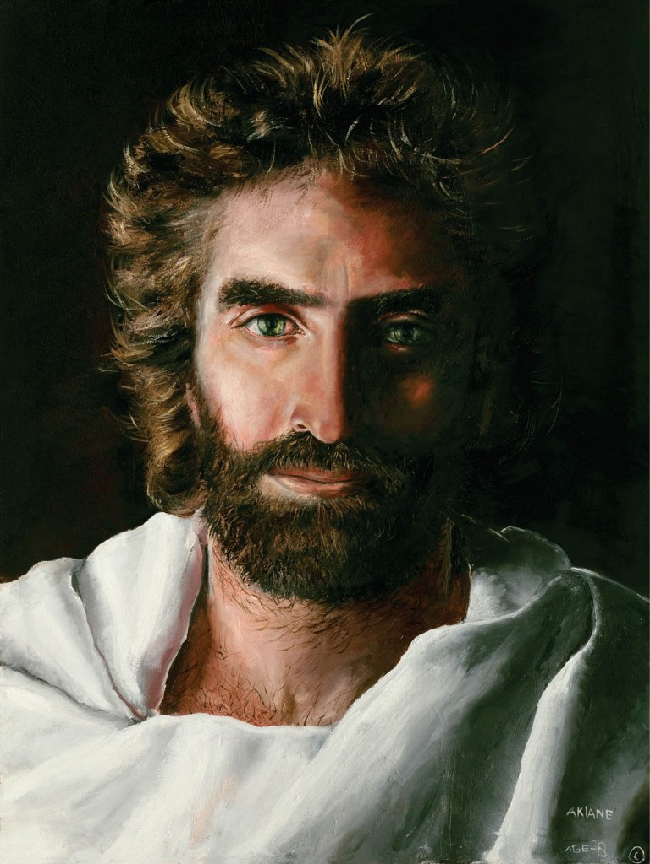
- (CCC 1406): Jesus said: “I am the living bread that came down from heaven; if any one eats of this bread, he will live forever; . . . he who eats my flesh and drinks my blood has eternal life and . . . abides in me, and I in him” (Jn 6:51, 54, 56).
- (CCC 1407):The Eucharist is the heart and the summit
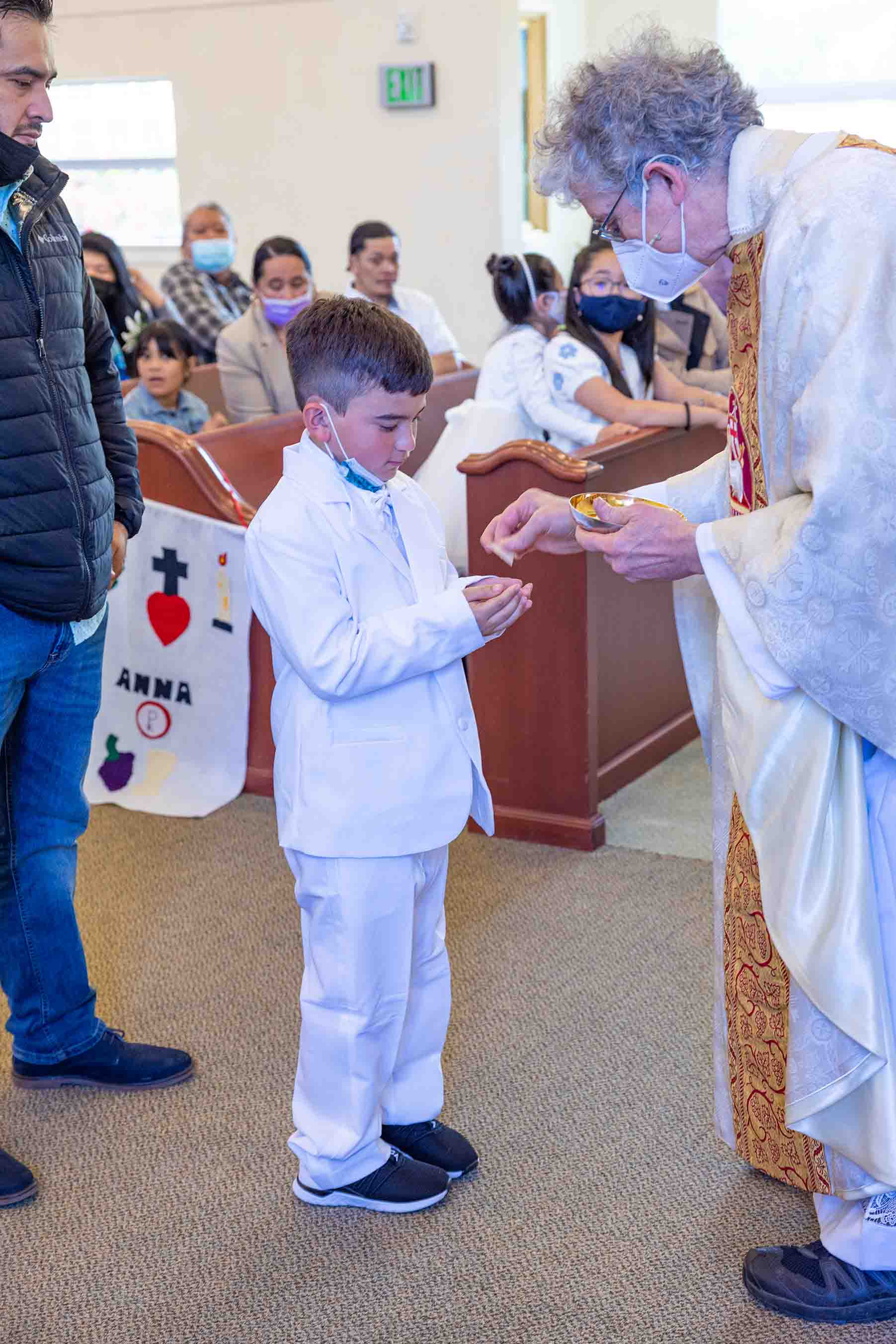 of the Church’s life, for in it Christ associates his Church and all her members with his sacrifice of praise and thanksgiving offered once for all on the cross to his Father; by this sacrifice he pours out the graces of salvation on his Body which is the Church.
of the Church’s life, for in it Christ associates his Church and all her members with his sacrifice of praise and thanksgiving offered once for all on the cross to his Father; by this sacrifice he pours out the graces of salvation on his Body which is the Church. - Eucharist is one of the Sacraments of Initiation: Initially received with Baptism and Confirmation.
- Usually most cradle Catholics receive it in the Second Grade, immediately following their first Reconciliation.
- All who are in RCIA will receive it at the Easter Vigil.
Other Terms for the Eucharist
- Eucharist:
- It means “Thanksgiving” in Greek.
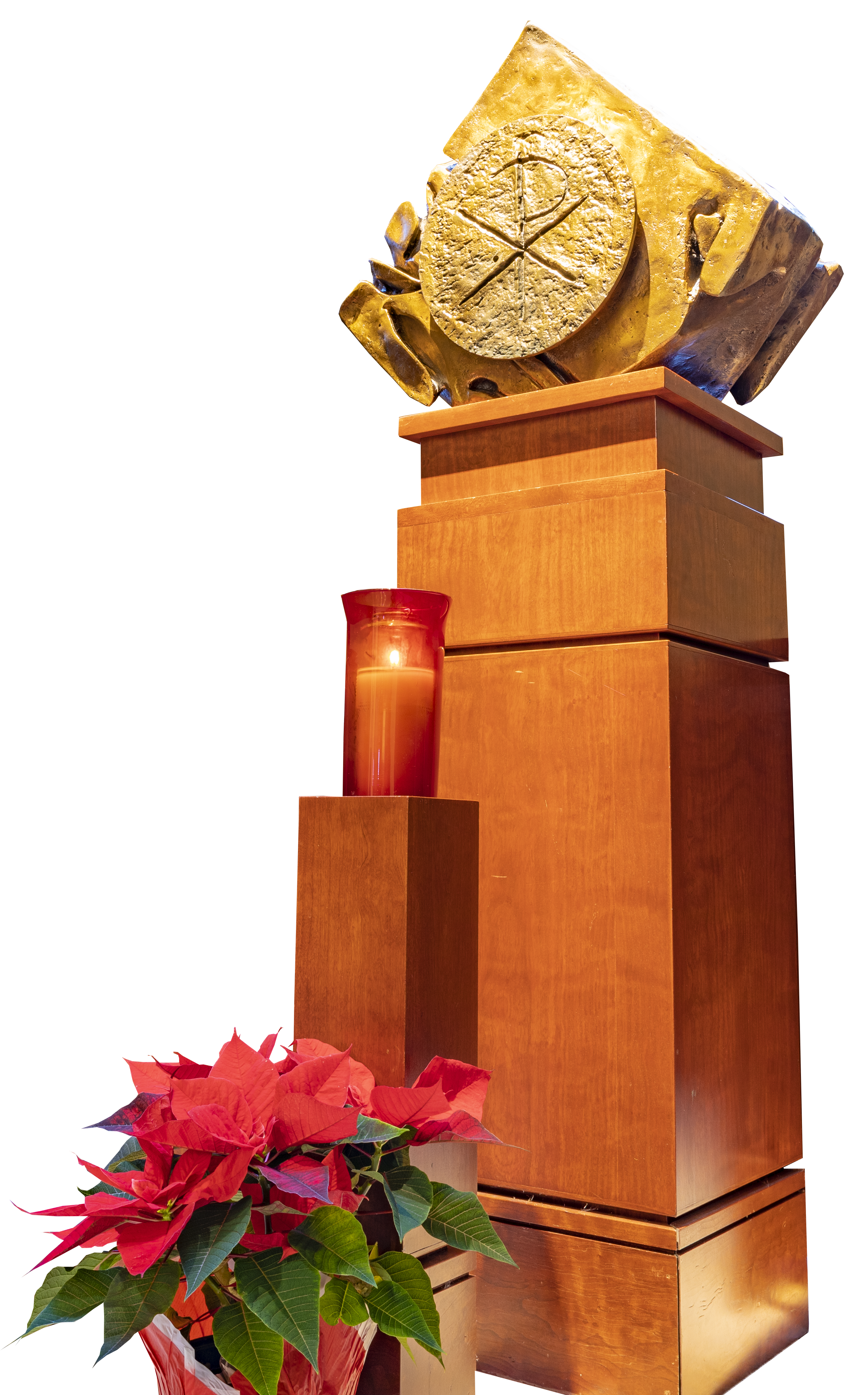 It is an act of thanksgiving to God. The greek word recalls the Jewish blessings that proclaim (especially during a meal) God’s works: creation, redemption and sanctification.
It is an act of thanksgiving to God. The greek word recalls the Jewish blessings that proclaim (especially during a meal) God’s works: creation, redemption and sanctification. - Originally the word referred to the gathering of the community to celebrate Jesus’ Last Supper with Bread and Wine.
- Now the word also refers to the host.
- It means “Thanksgiving” in Greek.
- The Lord’s Supper, Breaking of Bread, Memorial, Holy Sacrifice, Holy and Divine Liturgy, the Sacred Mysteries, Most Blessed Sacrament, Holy Communion, Holy Mass. (For a more detailed explanation of these terms click here).
History and Origin of the Eucharist
- The Jewish Passover Meal—a Commemoration of the Exodus from Egypt.
- The Exodus is the most important event in Jewish History:
- It was when God set the Israelites free from the Egyptians.
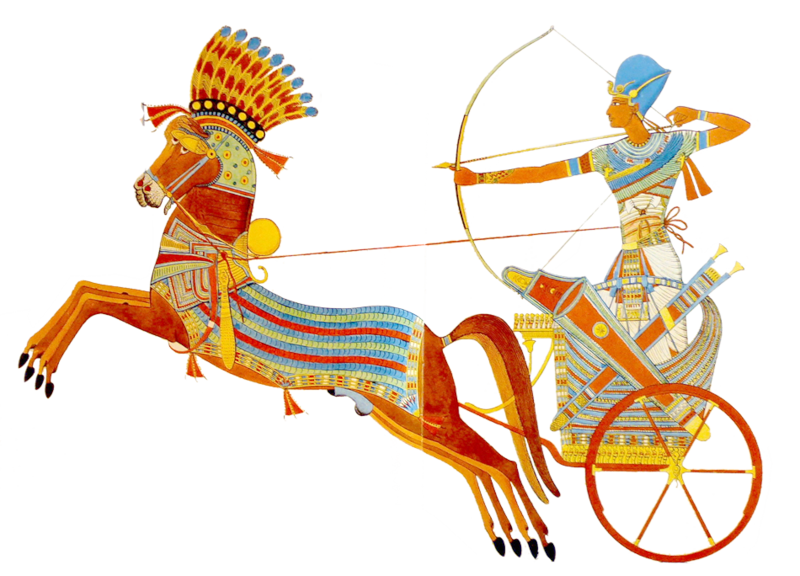
- They sacrificed an unblemished lamb and spread it’s blood on their doorposts and were saved from the Angel of Death who came to kill the firstborn in Egypt.
- God led them through the Reed Sea, into the Wilderness and eventually into the Promised Land.
- The Exodus is commemorated in various Feasts throughout the year—one important one is the Passover Celebration.
- It was when God set the Israelites free from the Egyptians.
- The Passover Meal:
- The Israelites were commanded to commemorate the Exodus every year with a Passover Meal as a memorial to what God did for them.
- This meal looked backward to how God set them free and it looked forward to the day when he would set them free from all their
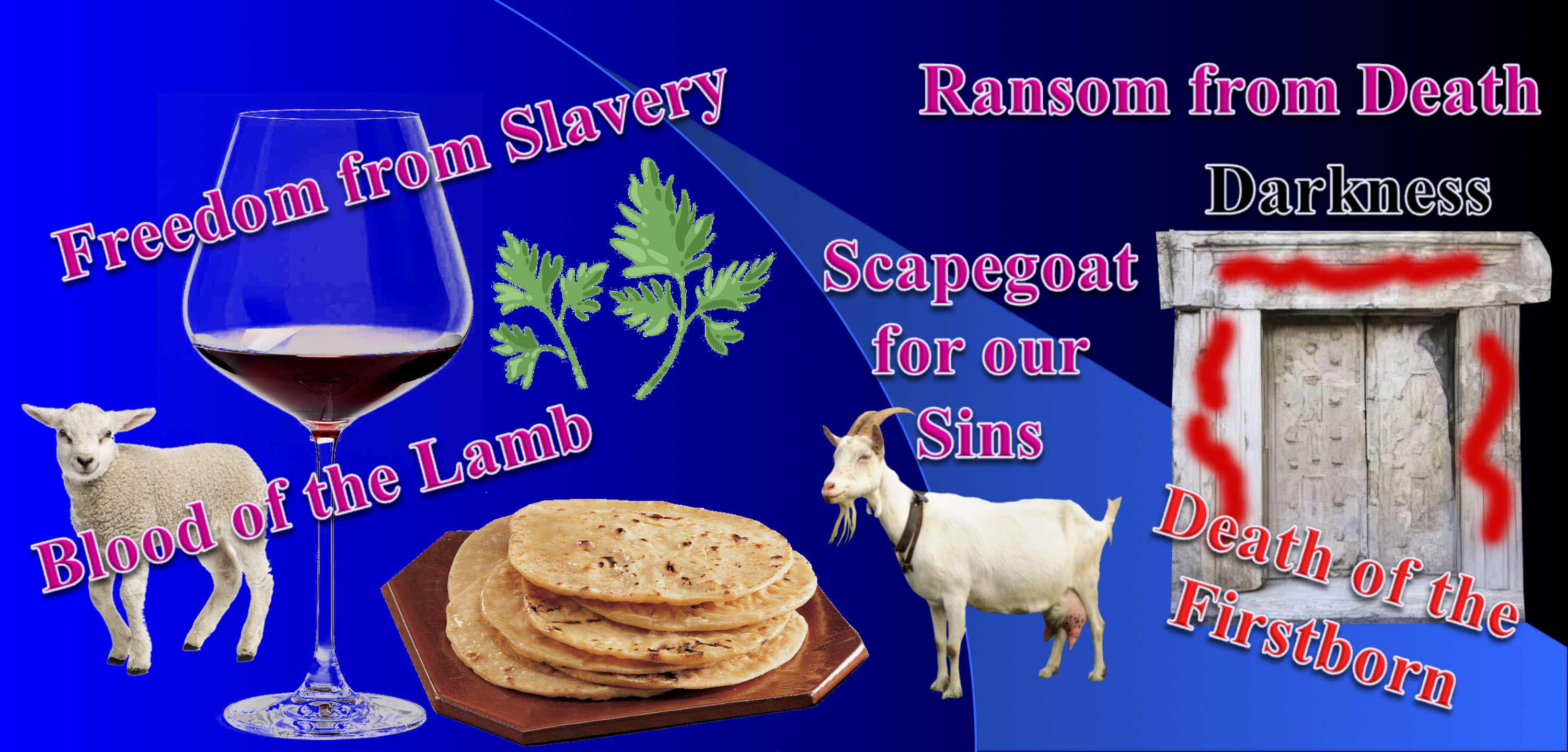 enemies.
enemies. It was a Freedom Meal.
They were to sacrifice an unblemished lamb and eat it, they were to eat unleavened bread (the bread of affliction), bitter herbs, drink wine…
- The Exodus is the most important event in Jewish History:
- Jesus’ Last Supper was in a Passover Context:
Jesus took all the themes of the Passover meal and centered them around himself.
Then he commanded his disciples to celebrate it as a memorial to him—as if he were replacing the Passover Meal.
The Celebration of the Eucharist
There are two main focal points in the Mass: The “Liturgy of the Word” and the “Liturgy of the Eucharist”. To these are added in introduction and a conclusion. If you would like a more detailed look at the parts of the Mass click here.
- The Introductory Rites: The focus on this part of the Mass is welcoming us, gathering all of us together into one Body, preparing us to hear what God has to say to us in the music and holy scriptures and making us ready to receive Jesus’ Body and Blood.
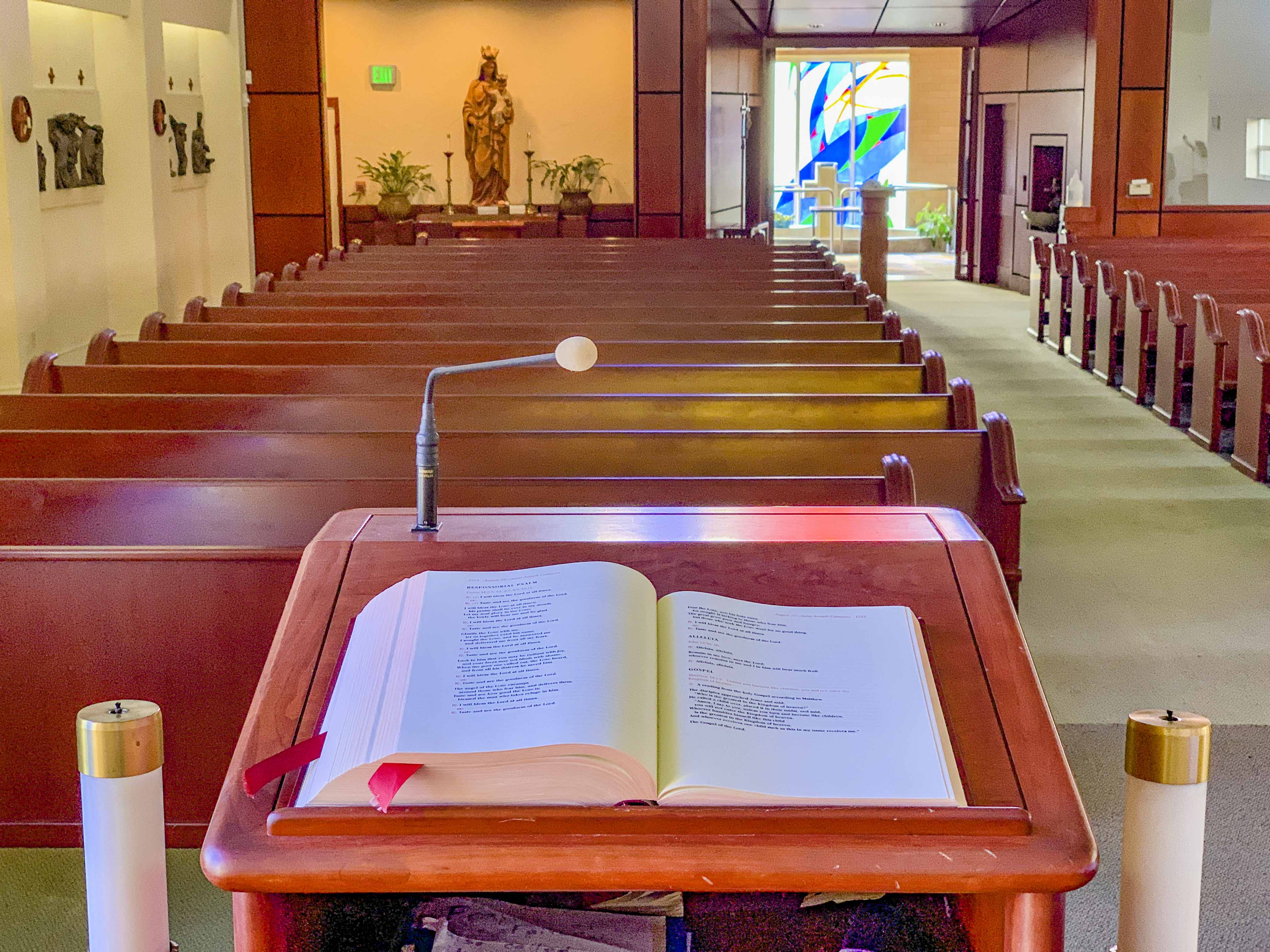
- The Liturgy of the Word: This is when we listen attentively to the Holy Scriptures: One Old Testament Reading, an Old Testament Psalm, a reading from one of the New Testament Letters and finally the Gospel Reading.The Homily is meant make the readings apply to our lives today and help us to see Christ in the details of our situations. This first focal point of the Mass concludes with our reciting of the Creed (our profession of faith) and our intercessory prayer for the needs of the Church, the world, those in special need and the needs of our parish.
- The Liturgy of the Eucharist: This Second Focal Point of the Mass begins with a preparation of the altar to celebrate a meal. It is also a gathering of the gifts that have been brought to offer up as a sacrifice: the bread and wine and usually money that we are giving to those in need. A long Eucharistic Prayer follows. Much of the content is drawn from very ancient prayers from the Mass. In a nutshell, the priest recalls God’s saving deeds of the past, and Christ’s saving deeds in his passion, death and resurrection and asks that God continue his saving work in the present. We give thanks for all of this (the word thanks in Greek is the word “Eucharist”) and proclaim how he is most holy (Sanctus in Latin). The priest calls down the Holy Spirit to change the bread and wine into the body and blood of Jesus and we recount the narrative of the Last Supper.
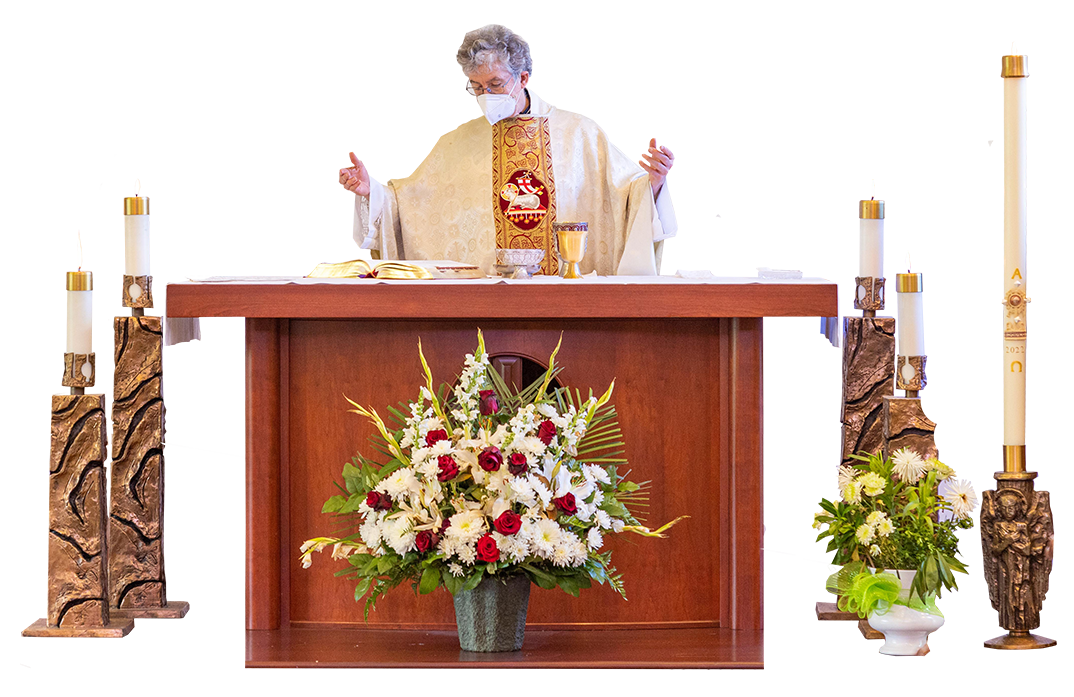 We proclaim God’s Glory. Then to prepare to receive the Eucharist (or communion), we express our unity by together proclaiming the Lord’s prayer. Then we express the unity that God is bringing about with us through the sign of peace: God has reconciled us to himself and offered us his peace and we offer it to one another. Then we express our unity by processing to receive communion in which Christ feeds us and unites us to himself. Being united with Christ, we are also drawn into union with all those who are in the body of Christ.
We proclaim God’s Glory. Then to prepare to receive the Eucharist (or communion), we express our unity by together proclaiming the Lord’s prayer. Then we express the unity that God is bringing about with us through the sign of peace: God has reconciled us to himself and offered us his peace and we offer it to one another. Then we express our unity by processing to receive communion in which Christ feeds us and unites us to himself. Being united with Christ, we are also drawn into union with all those who are in the body of Christ. - The Concluding Rite: Blessing and Dismissal: This part of the Mass begins with announcements of what is going on in the parish, including important news. Then, we bow our heads to receive God’s blessing. Like during the beginning of the Mass, we make the sign of the Cross—our expression of God as 3 in 1. We are then dismissed by the priest with the words, “Go in Peace…..” And we give our Liturgical Yes, “Thanks be to God.” “Ite, missa est” (Go!! She (Church) is sent!!). This is the Latin form of the dismissal, which is where the word Mass comes from.
Eucharist as a Sacrament
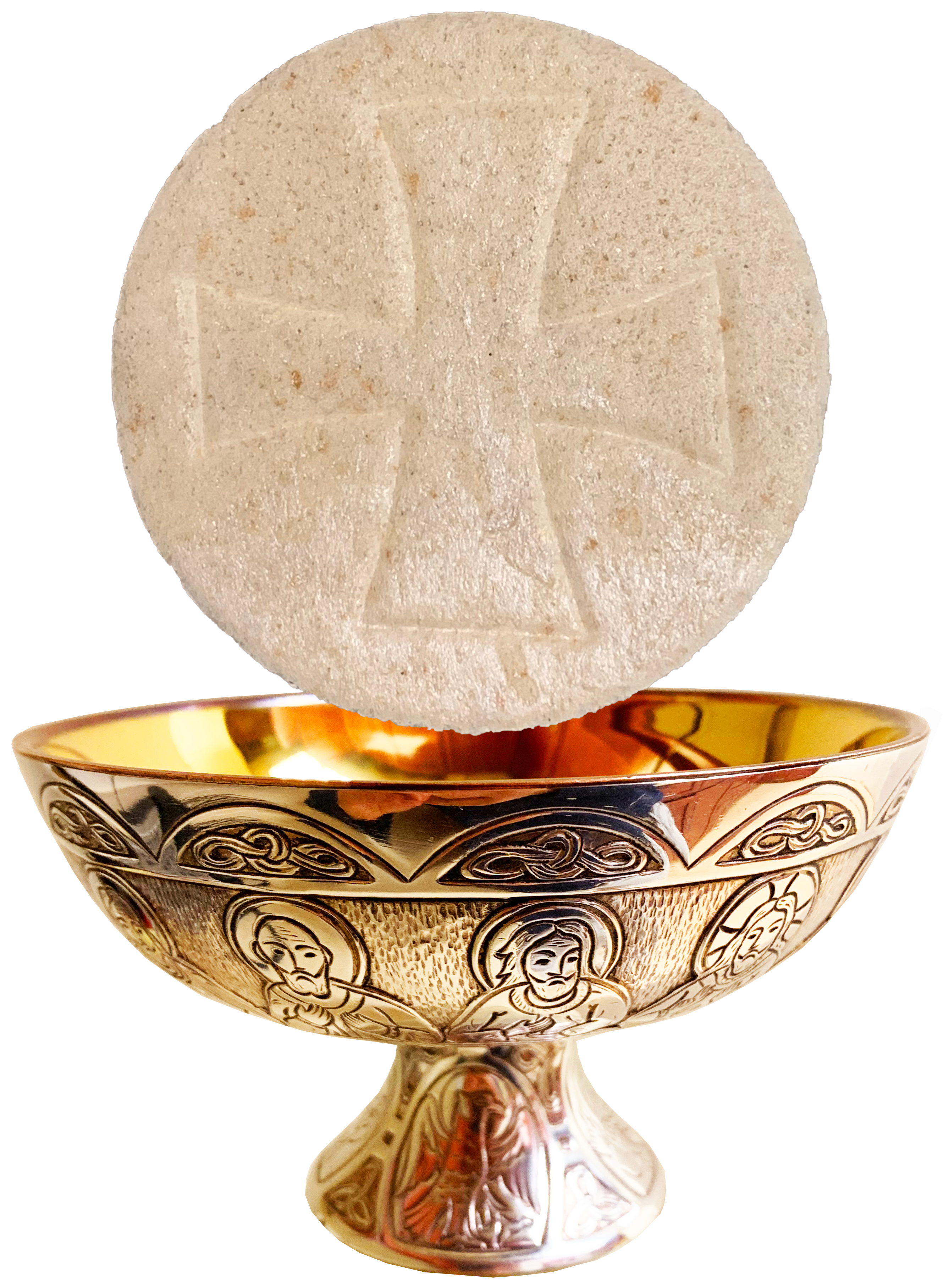
- The Sacramental Signs of the Eucharist: The Bread and Wine:
- Body:
- The word body indicates the whole of life.
- “In instituting the Eucharist, Jesus left us the gift of his whole life, from the first moment of the Incarnation to the very end, including all that had made up his life: silence, sweat, hardship, prayer, struggle, joy, humiliation…” (p 22, Cantalamessa).
- Blood:
- Blood was thought of as the seat of life (cf Gen 9:4).
- So, in giving us his blood, Jesus is not giving us a part of his body; blood indicates a happening, death. He gives us his death.
- Thus, “the Eucharist is the mystery of the Body and Blood of the Lord, that is of the life and death of the Lord!” (p 22, Cantalamessa).
- We are called to offer ourselves on the altar with Christ:
- What is happening during the second part of the Mass
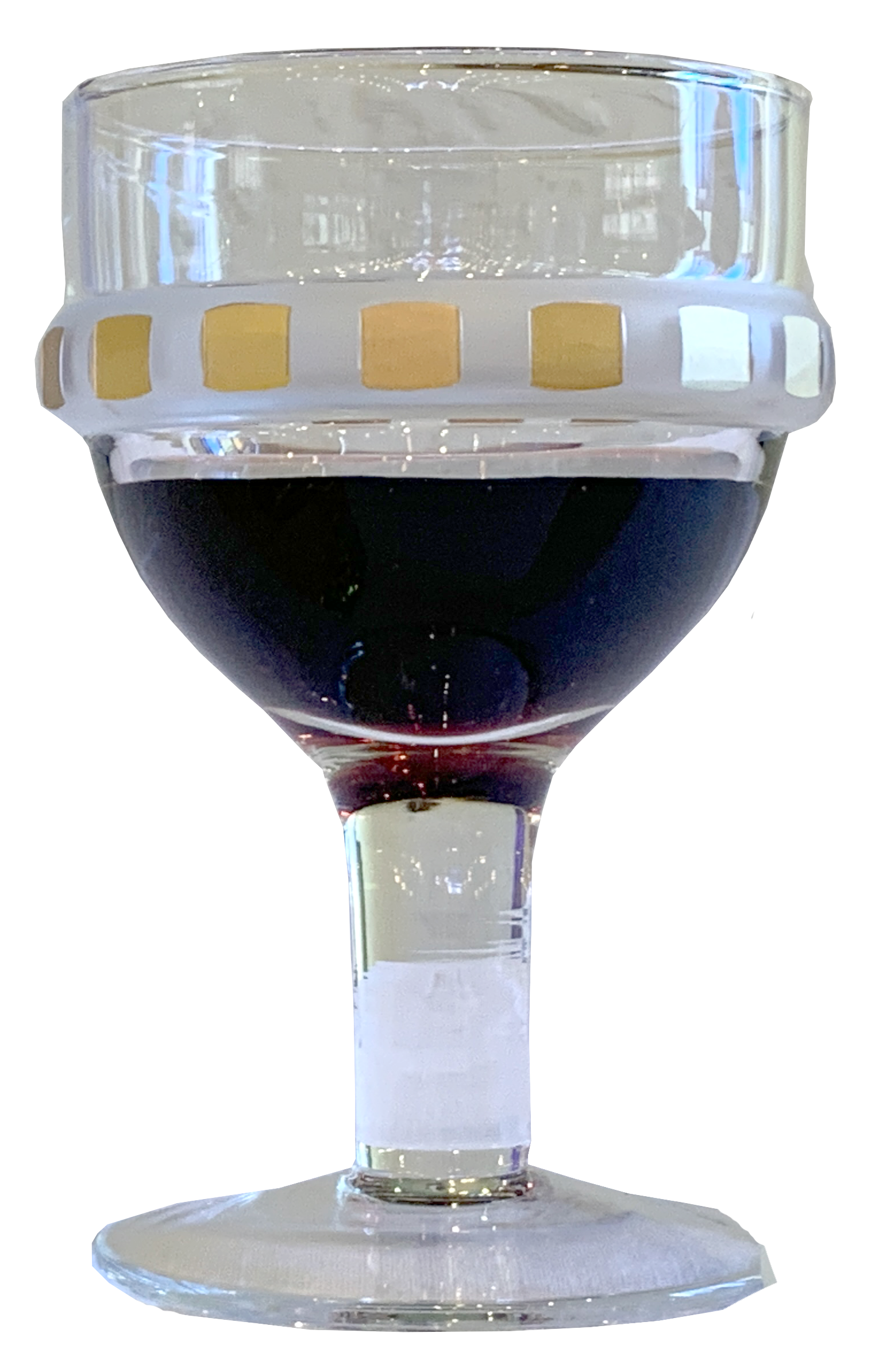 is that we are present at Christ’s offering of himself for the world—at the Last Supper. At that moment he decided and declared to the Father and his disciples that he would give up his life for us.
is that we are present at Christ’s offering of himself for the world—at the Last Supper. At that moment he decided and declared to the Father and his disciples that he would give up his life for us. - We are part of the Body of Christ.
- Thus, Christ’s sacrifice/offering is not complete unless we offer our lives to him and the world as a pleasing sacrifice.
- We are also called to be Eucharist (to sacrifice ourselves) for others—because we are the Body of Christ.
- At the end of Mass we are “sent out” to be Eucharist for others.
- What is happening during the second part of the Mass
Real Presence
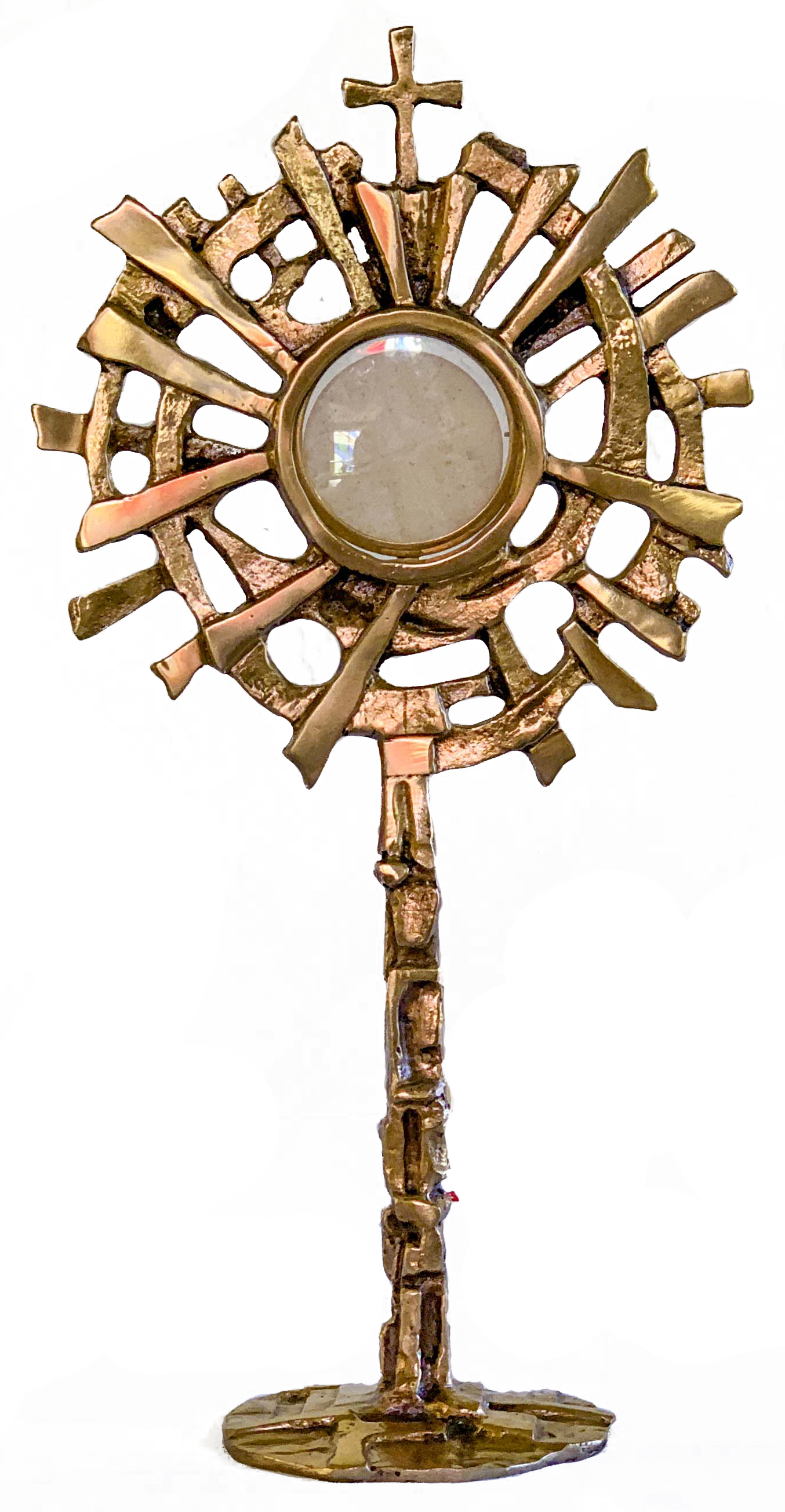
- CCC 1374: “The mode of Christ’s presence under the Eucharistic species is unique. It raises the Eucharist above all the sacraments as “the perfection of the spiritual life and the end to which all the sacraments tend.” In the most blessed sacrament of the Eucharist “the body and blood, together with the soul and divinity, of our Lord Jesus Christ and, therefore, the whole Christ is truly, really, and substantially contained.” “This presence is called ‘real’ – by which is not intended to exclude the other types of presence as if they could not be ‘real’ too, but because it is presence in the fullest sense: that is to say, it is a substantial presence by which Christ, God and man, makes himself wholly and entirely present.”
- The terms “body, blood and soul” signify his human nature.
- Thus, in the Eucharist Jesus is present in his human nature.
- The Eucharist is Jesus’ living and glorified body, not his dead flesh.
- In the Eucharist the Divine Person of the Word is present. So, Christ’s divinity is also present.
- The Risen Jesus is fully alive and present in the Eucharist: the Divine person with human and divine natures.
Transubstantiation
-
- Origin of the Term:
- Transubstantiation is a philosophical way of explaining what happens in the Consecration—when the bread and wine become the body and blood of
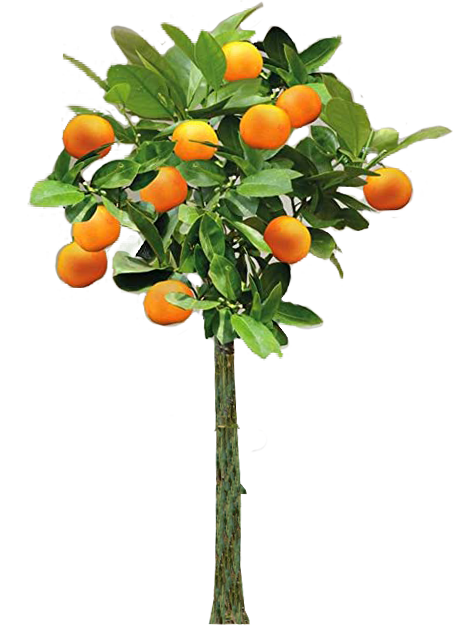 Jesus.
Jesus. - St. Thomas Aquinas in the 13th Century developed this term drawing from the Philosophy of Aristotle.
- There also can
 be other ways of explaining what happens at the
be other ways of explaining what happens at the  Consecration.
Consecration.
- Transubstantiation is a philosophical way of explaining what happens in the Consecration—when the bread and wine become the body and blood of
- Aristotle’s Distinction of Form and Substance of a Tree:
- The form or appearance of a tree is what kind it is: An Oak, Orange Tree, Palm Tree.
- The substance or essence of a tree is “What it is.” It is a tree. It has “Treeness.”
- The form or appearance is Bread & Wine.
- The substance or essence of it is the Body and Blood of Jesus. In its essence it is no longer bread and wine, it is the Risen Christ.
- Aquinas’ Distinction of Form and Substance of the Body and Blood of Christ:
- When the
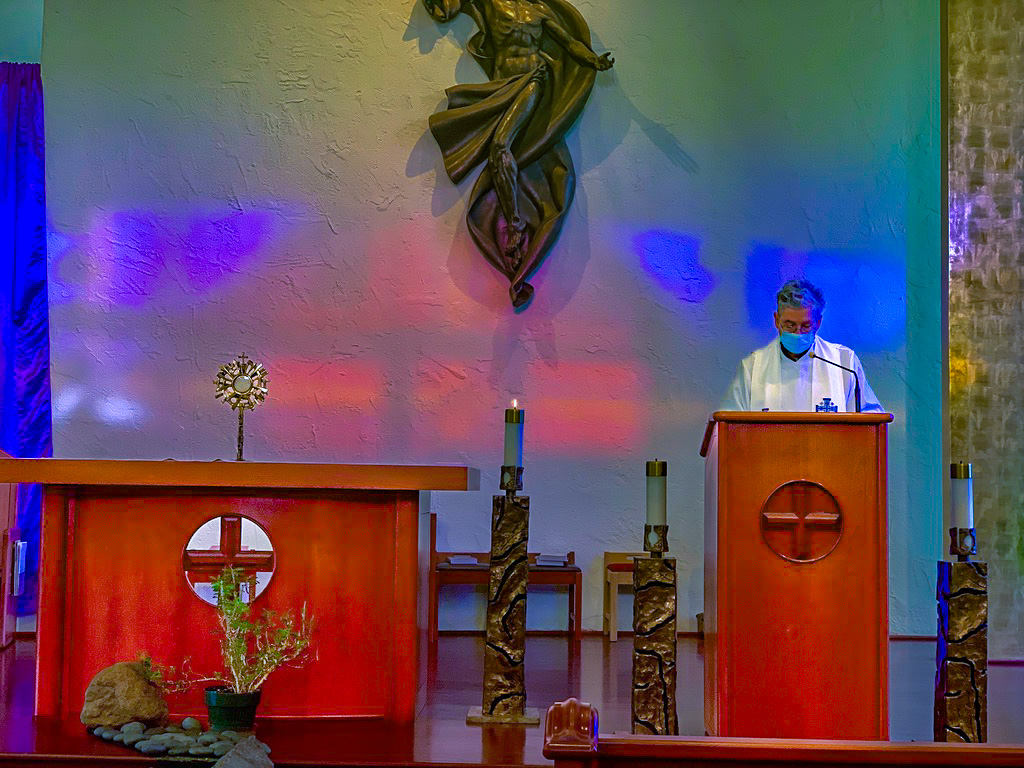 Bread and the Wine are consecrated at Mass, the form of the bread and wine remain the same, but the substance/essence changes into the body and blood of Jesus.
Bread and the Wine are consecrated at Mass, the form of the bread and wine remain the same, but the substance/essence changes into the body and blood of Jesus.
- When the
- Origin of the Term:
- We believe that the risen Christ is present at the time of Transubstantiation.
The Fruits of the Eucharist
- Communion:
- Union with God.
- Union with one another—the Mystical Body of Christ. “The Eucharist makes the Church” (CCC, 1396).
- This is the purpose of all the sacraments.
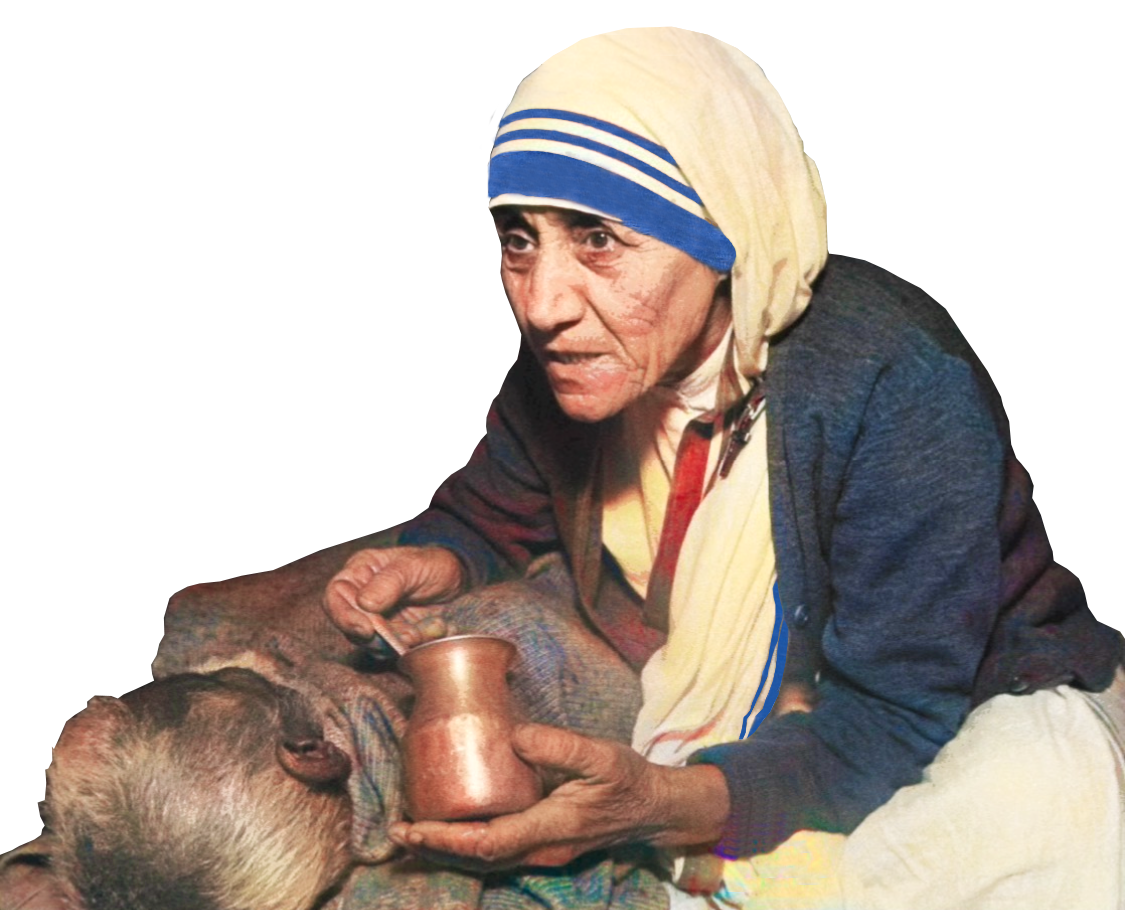
- Marriage: Union with one another that unites us to God.
- Reconciliation: About re-union.
- Spiritual Nourishment:
- Separates us from Sin: “It cleanses us from past sins and preserves us from future sins” (CCC 1393).
- Strengthens our Charity and Love:
- The Eucharist commits us to the poor:
- The Eucharist leads us to long for unity with all Christians.
